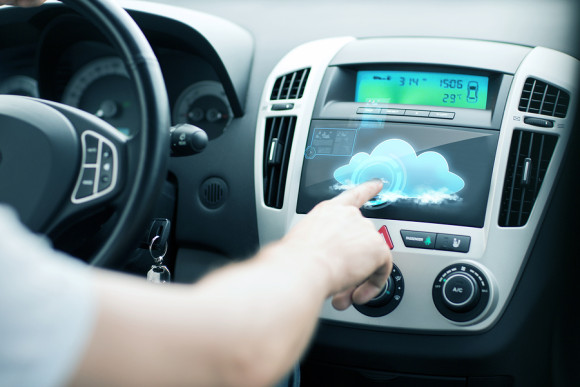Traffic jams in the future could cause potentially dangerous data snarl-ups as cars packed with entertainment, safety and navigation features vie for airwaves with smartphones, tablets and networked features in other vehicles, according to a study.
By 2024, mobile networks will see machine-to-machine (M2M) connections jump 10-fold to 2.3 billion from 250 million in 2014. Half these links will be automotive, said the study published on Thursday by Machina Research.
On the roads, about one in five vehicles worldwide will have some form of wireless network connection by 2020, or more than a quarter of a billion connected vehicles, according to a forecast from technology research firm Gartner.
Connected cars with onboard Wi-Fi connections could cause spikes in cellular data demand when traffic grinds to a halt as drivers seek alternative routes and bored passengers search for entertainment on phones and tablets, the Machina study says.
It says car navigation and collision detection systems that rely on local networks to identify obstacles could then become strained, if they are not carefully designed and regulated.
The report says the dangers will mount over the next decade but stops short of painting a picture of bloody roadside pile-ups. Such scenarios can be averted if network operators pay more attention to managing surging, unpredictable data demands in congested areas and device makers do more to ensure their products do not interfere with other network users.
Peak Traffic
“In terms of overall data volumes, connected cars don’t present much of a problem,” said Matt Hatton, founder and chief executive of Machina, a British market research firm specializing in machine-to-machine data communications.
“But network resource management is not based on total traffic volume. It’s based on particular cell sites during peak times of network use,” Hatton said of the antennas and equipment used to transfer mobile calls and data to and from a local area.
Peak traffic in rush hour could double in the immediate vicinity of congested areas due to the electronics on board connected cars, Machina estimates.
Already, most drivers stuck in traffic jams expect mobile phone coverage to drop out from the sheer volume of callers who suddenly find themselves bumper-to-bumper.
Less noticeably, phone users in densely populated areas can see superfast 4G data connections drop to slower 3G links or even 2G connections capable only of limited data transfers.
But while phones make minimal demands on a network until a user downloads a video, updates email or makes a call, network congestion multiplies when drivers converge in road traffic.
“Connected cars, as with other M2M devices, don’t behave like smartphones,” Hatton said, due in part to the vastly more diverse set of devices that will come into play with so many machines talking to other machines.
The Machina report was sponsored by TEOCO, a Fairfax, Virginia-based provider of network management services to major telecom network operators worldwide.
(Editing by David Clarke)
Related:
- What Did One Car Say to the Other Car?
- U.S. to Require Cars to Have ‘Talking’ Technology to Prevent Accidents
- Talking Cars, or V2V, May Help Humans Avoid Crashes
- Foreign Accents Drive Smart Cars’ Voice Technology Crazy
- Smartcars Pose Cyber Risk to Drivers, Senator Warns
- LA Auto Show: Connected Cars Coming Out of the Barn
- How Much Will Drivers Pay for High-Tech Devices?
Was this article valuable?
Here are more articles you may enjoy.



 Progressive Gains as Drivers Shop Around for Auto Insurance—Again
Progressive Gains as Drivers Shop Around for Auto Insurance—Again  South Carolina Ringleader Sentenced to 8 Years for Staged Accidents
South Carolina Ringleader Sentenced to 8 Years for Staged Accidents  GM Ends OnStar Driver Safety Program After Privacy Complaints
GM Ends OnStar Driver Safety Program After Privacy Complaints  Former Congressman Charged After Collision with State Trooper in Florida
Former Congressman Charged After Collision with State Trooper in Florida 

